The Optics Laboratory for students consists of seven laboratory rooms, as well as one storage and preparation room. Each of the first five rooms contains the experimental devices that are being used for each of the five sections of Optics: 1) Interference of light 2) Diffraction of light 3) Geometrical Optics 4) Polarization of light and 5) Dispersion of light. The other two rooms contain almost identical experimental devices, as many as in the previous five rooms. They have been prepared with the prospect of contacting the laboratory in each semester. Nowadays they are being used in case a damage occurs in the devices of the first five rooms. The photographs below illustrate both sides of each laboratory room along with a brief description of the containing experimental devices.
Students acquire experimental data by using these experimental devices that are being used to determine: physical constants related to light (wavelengths, refractive indices, etc.), polarization states, imaging processes (determination of focal lengths, lens magnifications, etc.), transmission and absorption spectra of various materials. As well as others related to various phenomena of Optics (Physical and Geometrical).
Room 1 (1A, 1B) includes the devices related to the Interference of light, such as: 1) the device of recording Newton’s rings for different lines emitted by a spectral lamp, in order to determine their wavelength, 2) the device of receiving interference fringes by dividing the wavefront (Young’s experiment), in order to determine the wavelength of a He-Ne Laser, and 3) Michelson and Fabry-Perott interferometers for their respective experiments.

(Room 1Α)
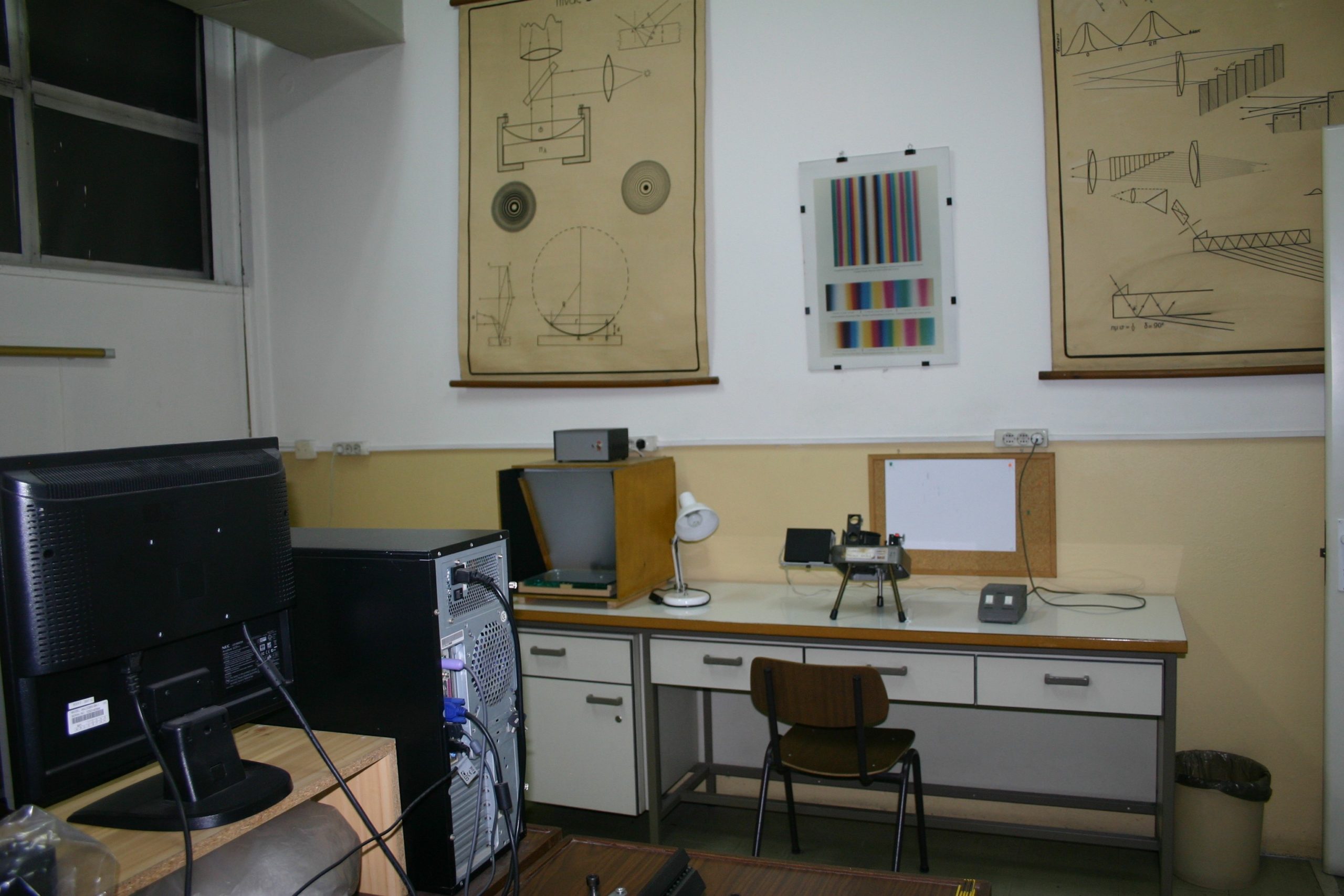
(Room 1Β)
Room 2 (2A, 2B) includes the devices related to the Diffraction of light: 1) an automated optical diffractometer, from the extracted experimental results of which we can determine the dimensions of apertures and slits as well as the period diffraction gratings. 2) A diffraction spectroscope, by means of which we can determine the wavelengths of different spectral lines of emitted by a gas lamp.

(Room 2Α)

(Room 2Β)
In Room 3 (3A, 3B) Geometrical Optics experiments are performed. The room equipment includes: 1) a device related to the imaging process through different types of lenses and mirrors. 2) Devices for the determination of the refractive index of water and of various types of glass. 3) A device for determining the refractive index of a prism by means of the minimum deviation angle etc.
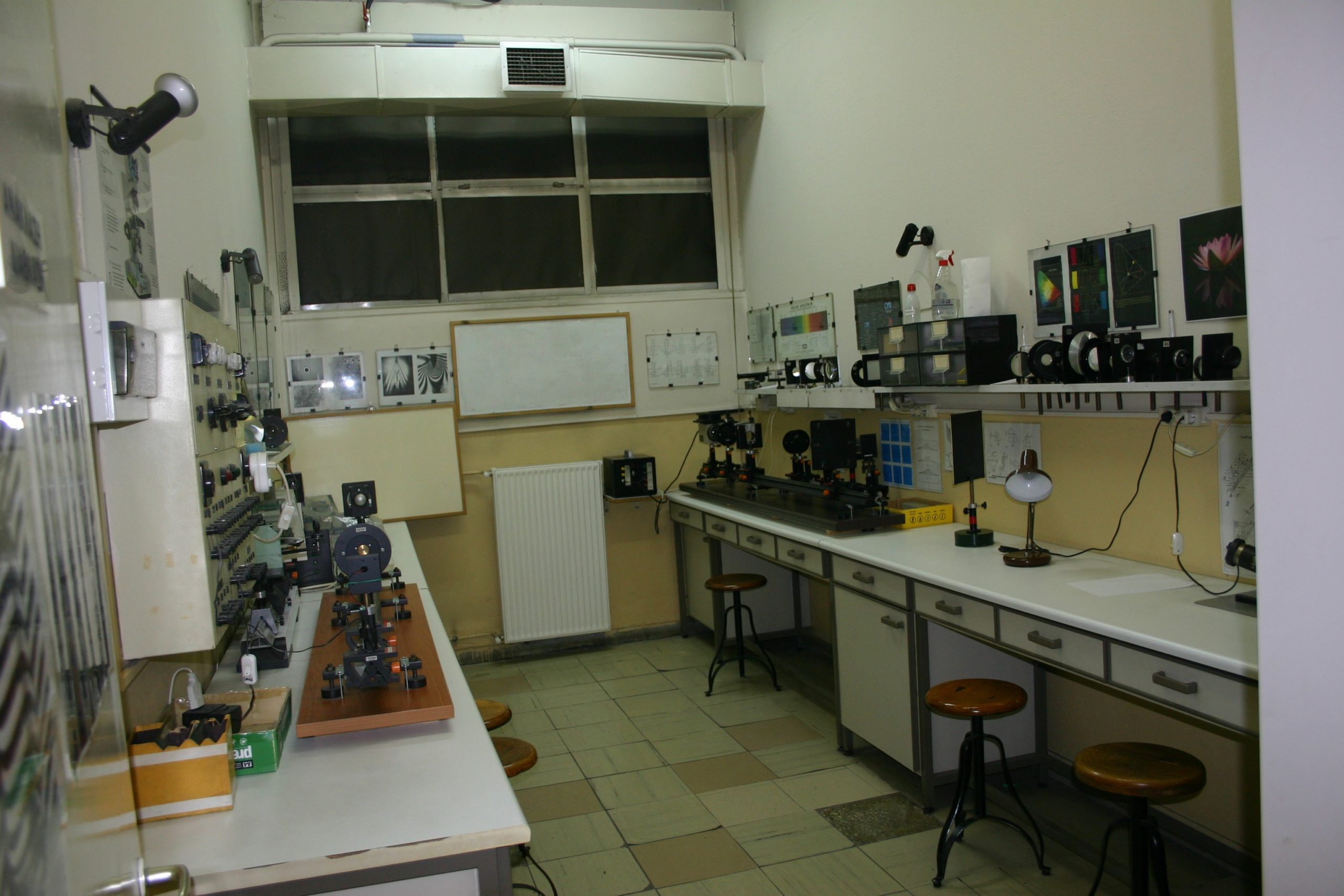
(Room 3Α)
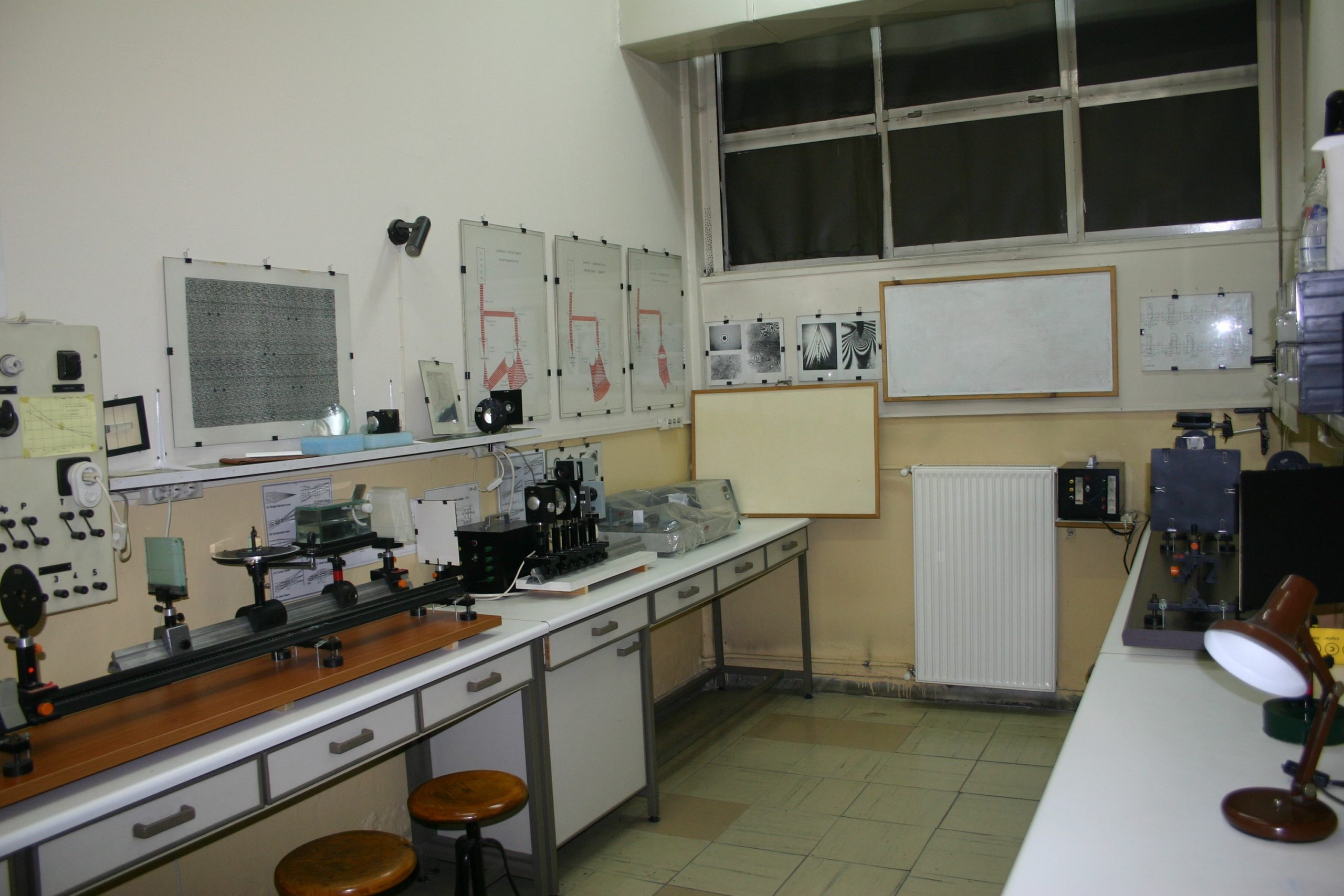
(Room 3Β)
Room 4 (4A, 4B) includes devices related to the Polarization of light. Specifically, it includes: 1) a device for the determination of the various polarization states. 2) A device for the measurement of the polarization degree of a partially polarized light. 3) A device for studying the birefringence effect of light equipped by calcite single-crystals. 4) A device for recording the reflectivity curves of glasses.
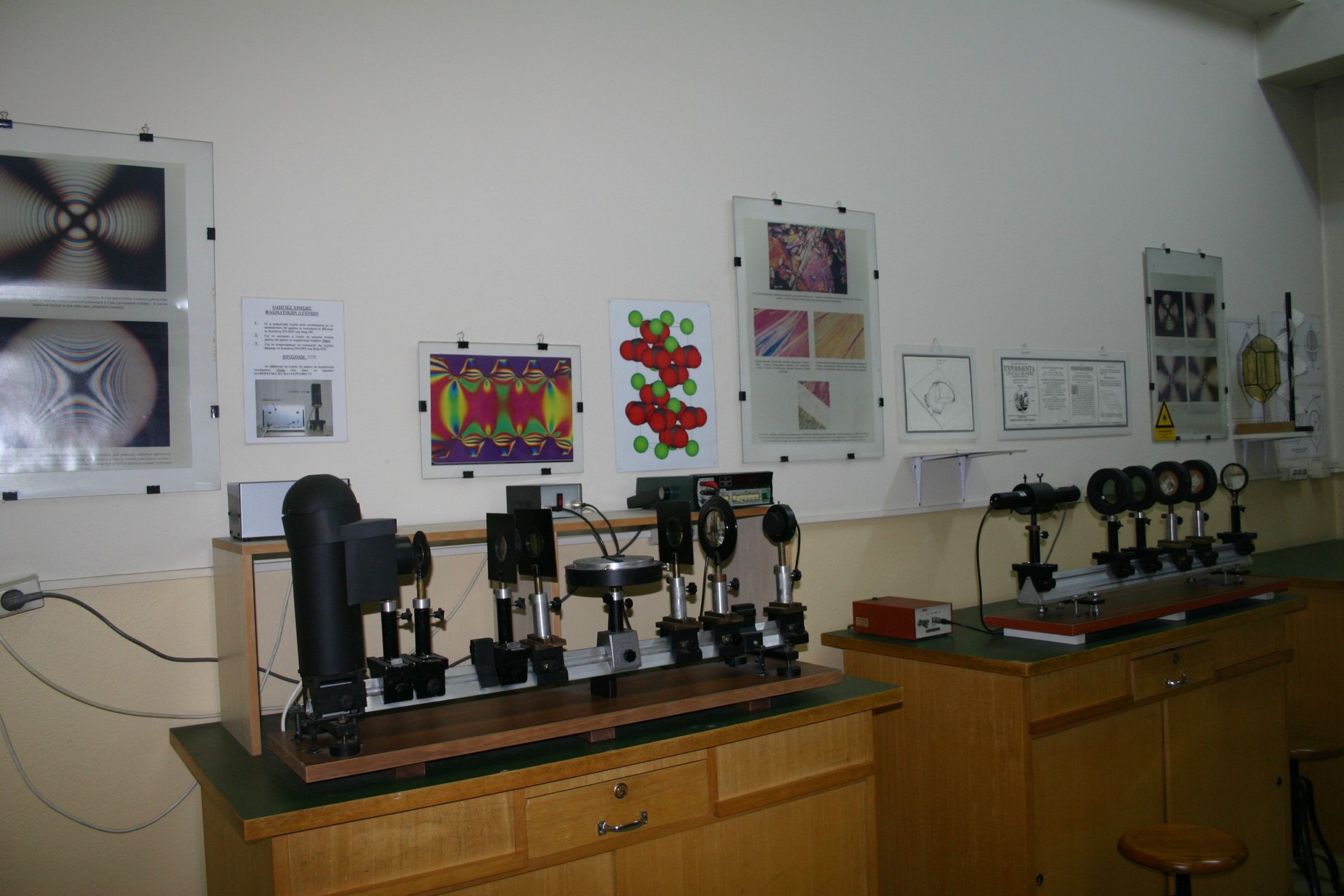
(Room 4Α)
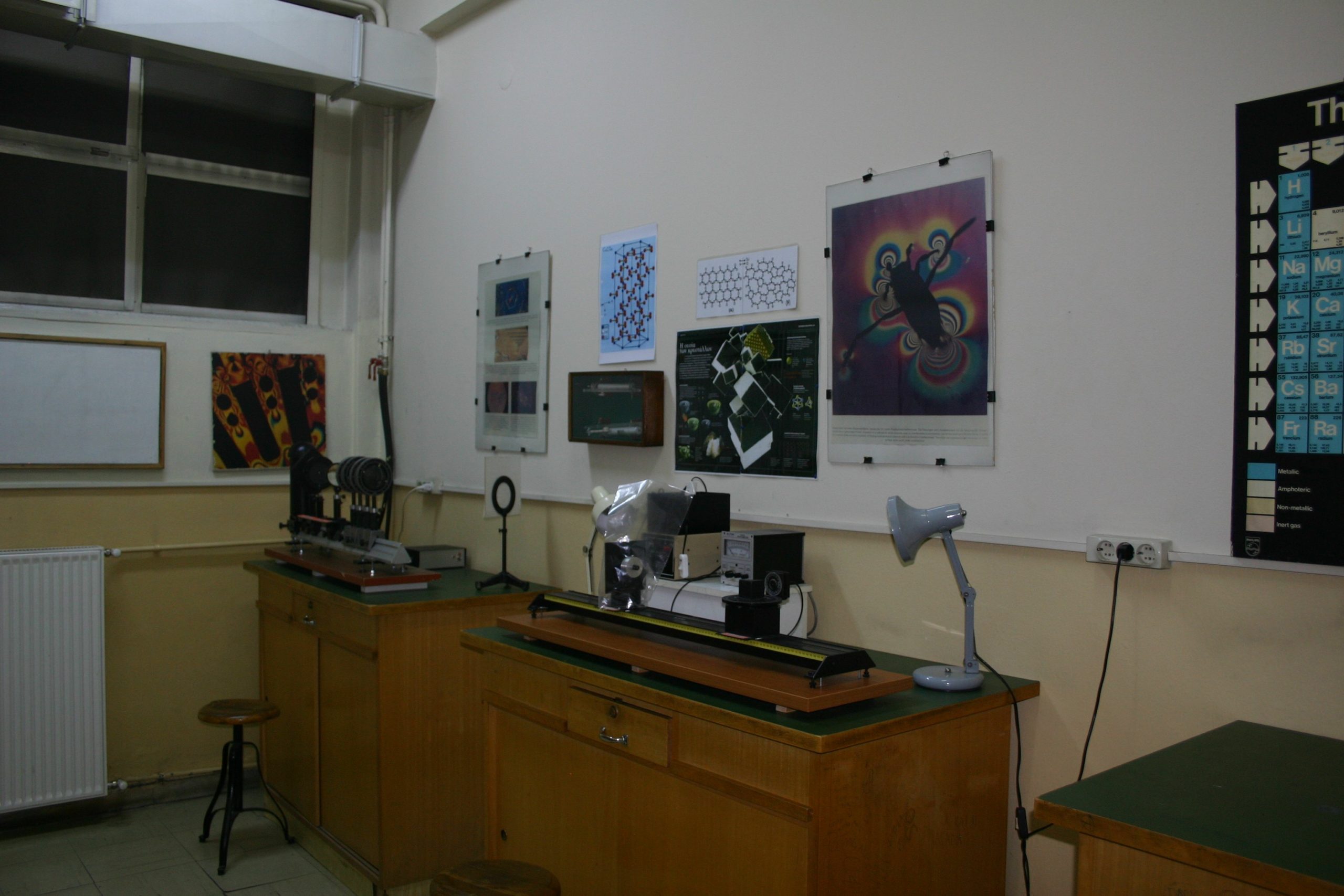
(Room 4Β)
Room 5 (5A, 5B) includes devices for the study of the Dispersion of light: 1) a manually operated spectrometer, the experimental data of which provide the optical transmission (or absorption) spectra of various materials. 2) An automated spectrophotometer for acquiring real-time transmission spectra. 3) A prism spectroscope, the experimental data of which provide the dispersion spectrum of the material from which the respective prism is made of.
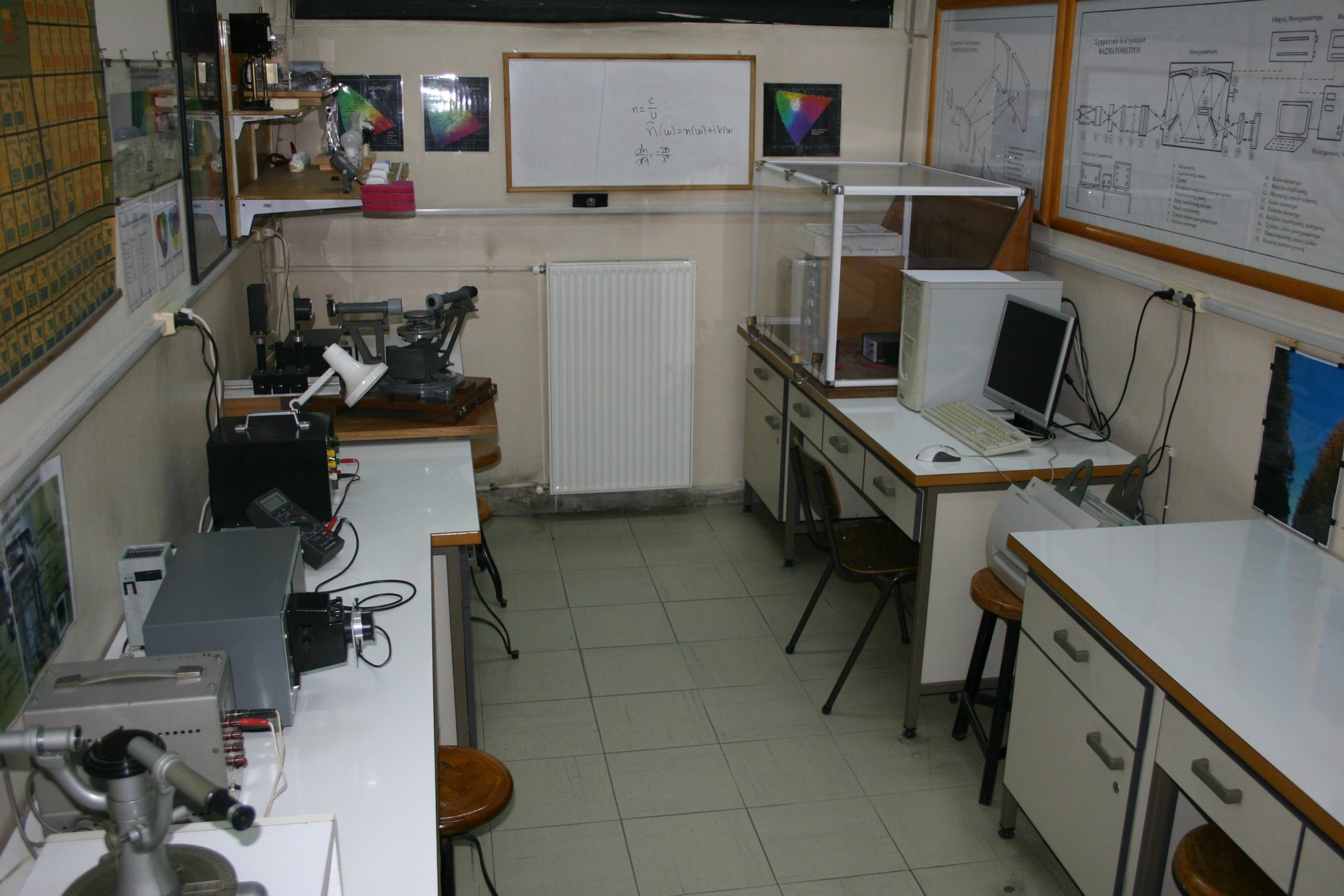
(Room 5Α)

(Room 5Β)
The following photographs illustrate both sides of Room 6 (6A, 6B) and Room 7 (7A, 7B), the use of which we have mentioned above.
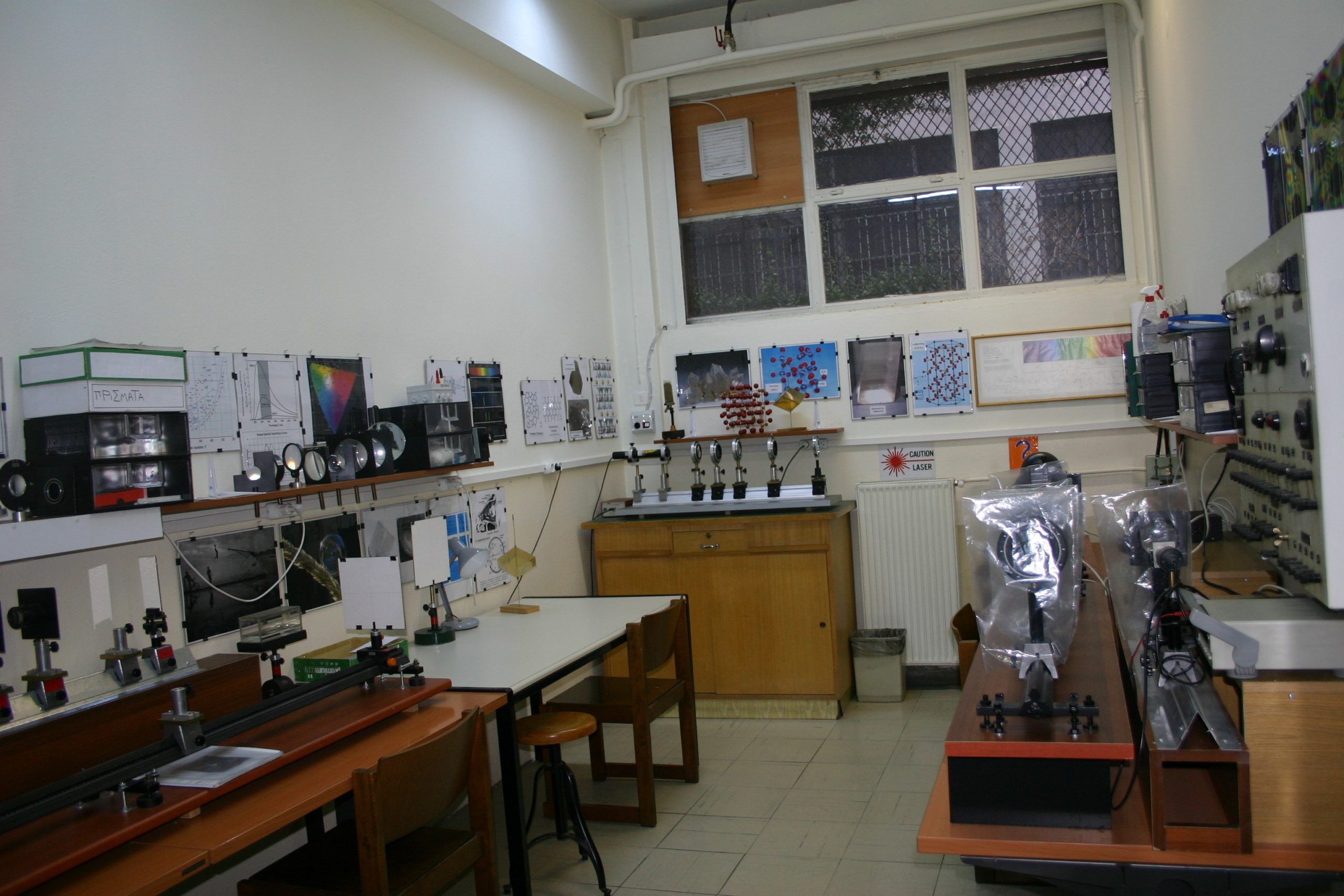
(Room 6Α)

(Room 6Β)
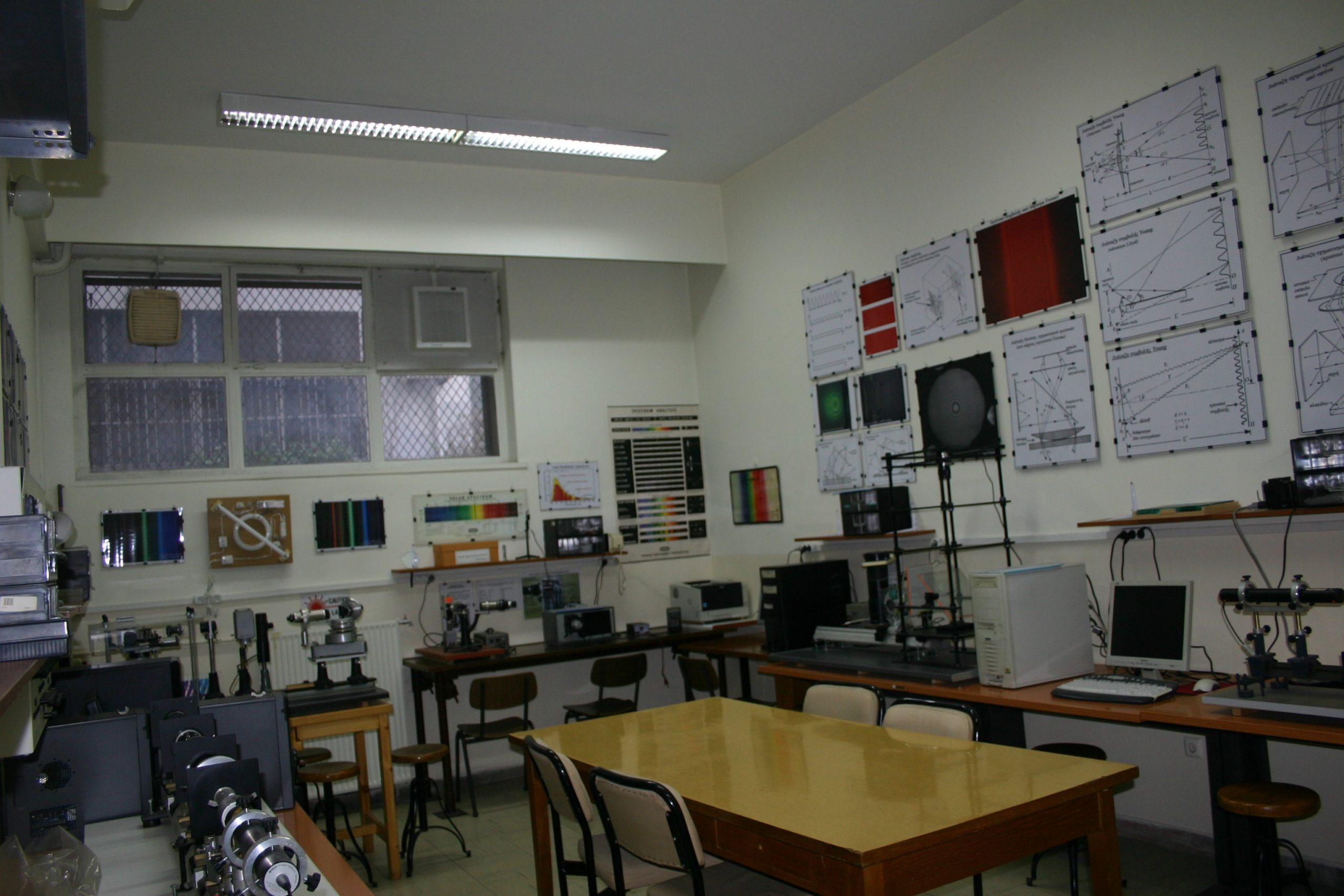
(Room 7Α)
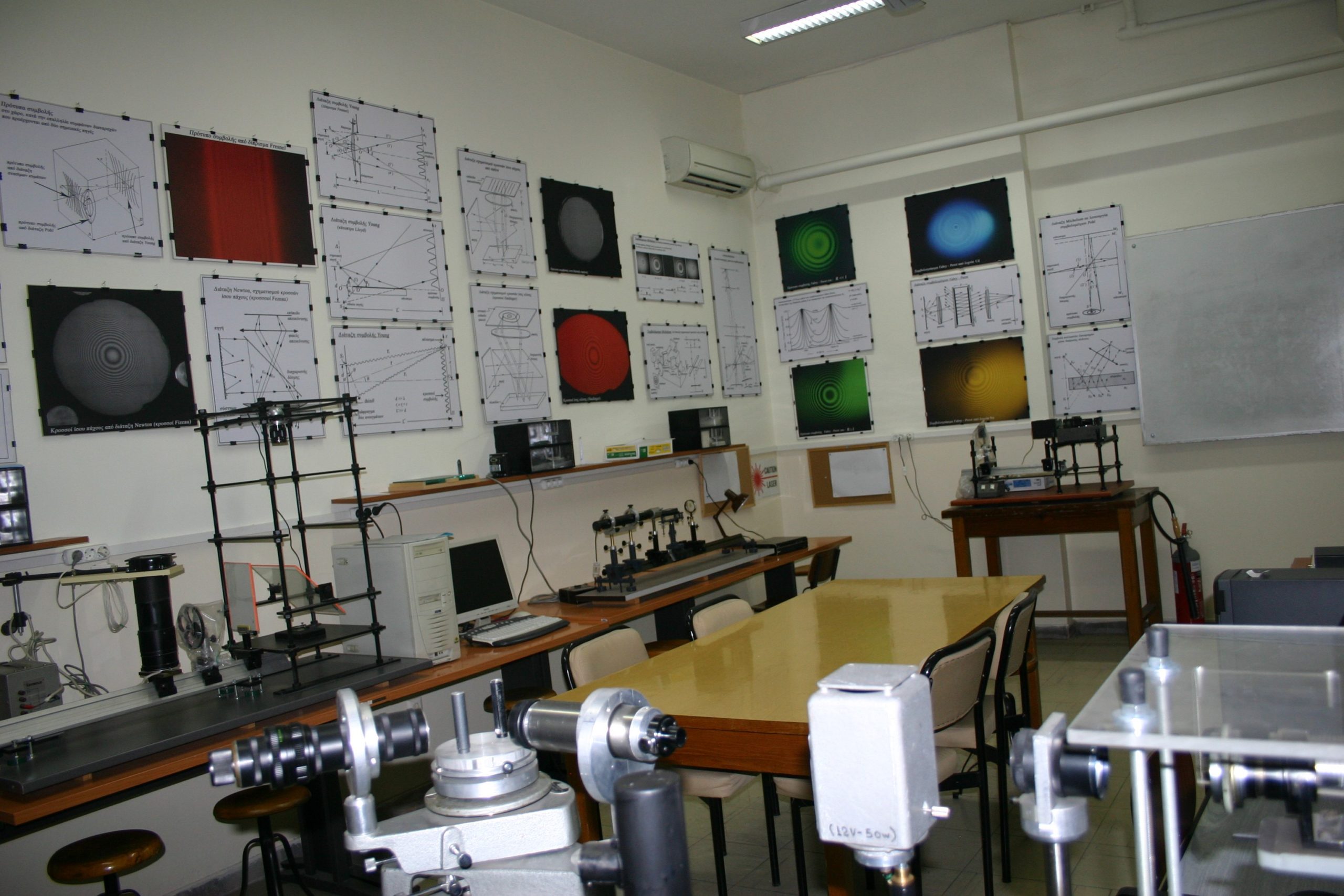
(Room 7Β)
Finally, Room 8 is: 1) a the storage area for spare parts of the aforementioned experimental devices, 2) the repair and maintenance area and 3) the new devices development area.

(Room 8)
